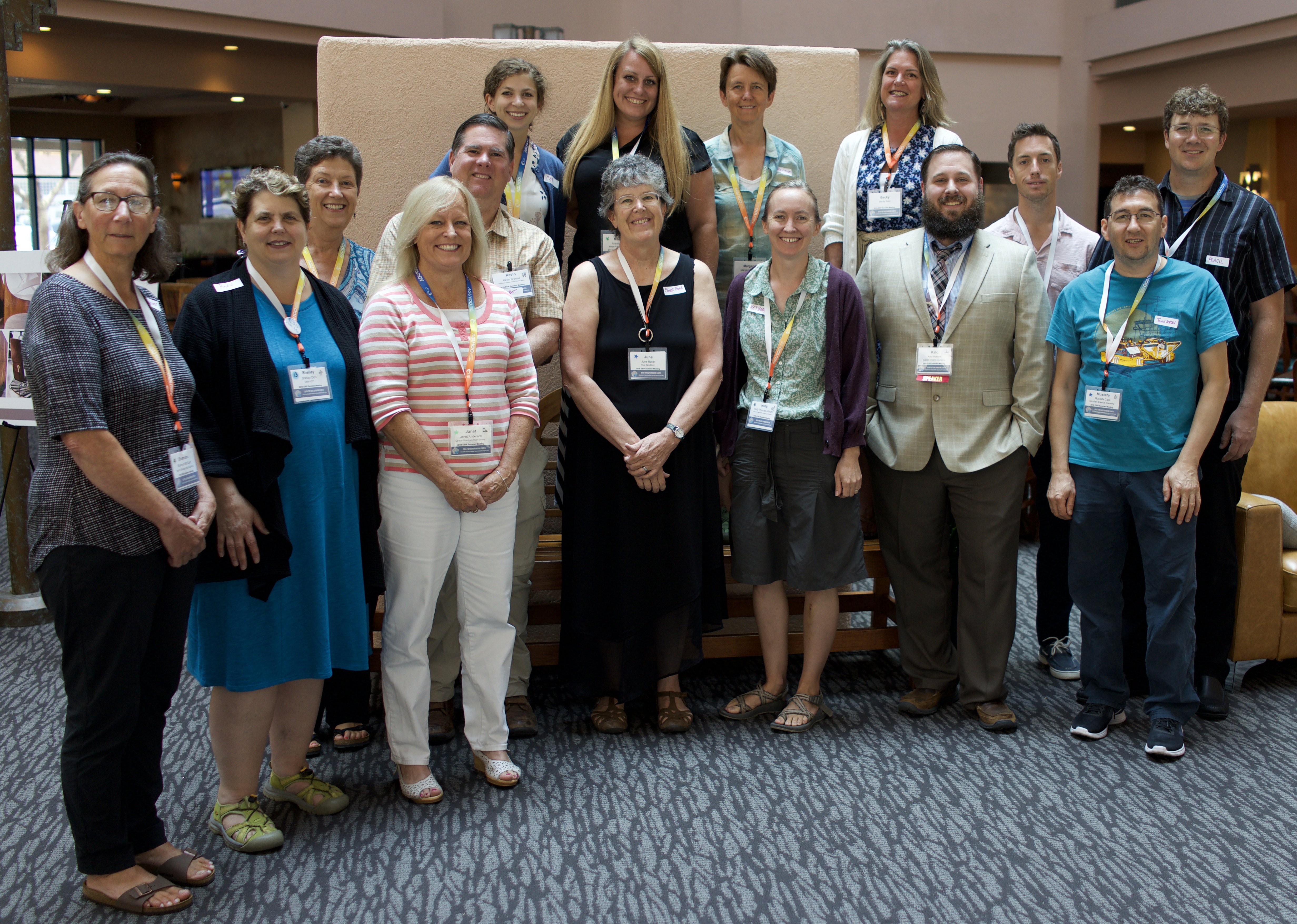
[ Archive ]

 |
CIMSS-NOAA Weekly Report [ Archive ] |
 |
ASPB AND CIMSS WEEKLY HIGHLIGHTS FOR THE WEEK ENDING JULY 20, 2018
IN THE PRESS:
SSEC and CIMSS Scientists in the News: Scientists at the University of Wisconsin-Madison (UW) Space Science and Engineering Center (SSEC) and the Cooperative Institute for Meteorological Satellite Studies (CIMSS) provide expert commentary, interviews, and imagery to news media. In the news this week: 1) Researchers from around the world convened mid-July in Madison, WI to attend the 13th Annual Workshop on Antarctic Meteorology and Climate and Year of Polar Prediction-Southern Hemisphere hosted by the SSEC's Antarctic Meteorological Research Center (AMRC). SSEC News interviewed AMRC director Matthew Lazzara about the push to improve polar weather predictions (https://www.ssec.wisc.edu/news/articles/11129). Lazzara also appeared on Wisconsin Public Radio's Central Time program to discuss Antarctic and global climate (https://www.wpr.org/uw-helps-locate-coldest-temperatures-earth). 2) SSEC outreach program manager Rose Pertzborn is a co-collaborator on a three-year Wisconsin Idea grant to support hands-on climate change research in rural classrooms. SSEC News republished the story by the UW-Madison Nelson Institute for Environmental Studies (https://www.ssec.wisc.edu/news/articles/11120). 3) CIMSS Satellite Blog contributors Scott Bachmeier and Scott Lindstrom published posts on the "Tornado outbreak in Iowa" (June 19), "Comparisons of GOES-15, GOES-16 and GOES-17" (June 17), Pyrocumulonimbus cloud formation in CA Ferguson Fire" (June 15), "Occluded cyclone in southern Canada" (June 15), "Pseudo-Stereoscopic views of convection" (June 14), "The Ferguson fire" (June 14), "Remnants of Hurricane Beryl" (June 13). The CIMSS Satellite blog is at http://cimss.ssec.wisc.edu/goes/blog/. (J. Phillips, SSEC, 608-262-8164, M. Lazzara, SSEC, S. Bachmeier, CIMSS, S. Lindstrom, SSEC)
 (Click image to enlarge)
(Click image to enlarge)
Figure caption: Matthew Lazzara, director of the UW-Madison Antarctic Meteorological Research Center, on site at Minna Bluff Automatic Weather Station February 2018. Credit: Ryan Morse.
ITEMS FOR THE ADMINISTRATOR:
ITEMS FOR THE ASSISTANT ADMINISTRATOR:
ITEMS FOR THE OFFICE DIRECTOR, STAR:
NASA HAQAST Meeting Presentation on improved emissions estimates using satellite NO2 retrievals: Brad Pierce presented results of using satellite nitrogen dioxide (NO2) tropospheric column retrieval data assimilation to constrain National Weather Service (NWS) air quality forecasts at the NASA Health and Air Quality Applied Science Team (HAQAST) meeting. The HAQAST meeting brought national air quality and environmental health management stakeholders together with air quality and health researchers to discuss how NASA satellite data and modeling tools can be used to inform air quality and environmental health decision making processes. The NWS air quality forecast improvement demonstration was part of a broader HAQAST Tiger Team effort to support NWS, Environmental Protection Agency (EPA), the Centers for Disease Control (CDC), and the Lake Michigan Air Directors Consortium (LADCO)air quality modeling efforts with improved estimates of nitrogen oxide (NOx) emissions using NO2 retrievals from the NASA Ozone Monitoring Instrument (OMI) and the NASA Geostationary Trace gas and Aerosol Sensor Optimization (GeoTASO. HAQAST was hosted by the University of Wisconsin-Madison, with co-sponsorship provided by the University of Wisconsin-Madison’s Cooperative Institute for Meteorological Satellite Studies (CIMSS), Space Science and Engineering Center (SSEC), Nelson Institute for Environmental Studies, and the Lake Michigan Air Directors Consortium (LADCO). (R.B. Pierce, E/RA2, 608-890-1892, brad.pierce@noaa.gov)
ITEMS FOR THE DIVISION CHIEF, CoRP:
GOES-16/17 Virtual Science Fair: Margaret Mooney from NOAA’s Cooperative Institute for Meteorological Satellite Studies (CIMSS) announced a virtual science fair for students using GOES-16 or GOES-17 data at the ESIP (Earth Science Information Partners) teacher workshop in Tucson this week. The competition will take place in the spring of 2019 with three levels of participation: middle school, high school and undergraduate. Students will win nominal gift certificates and their teachers/coaches will be awarded travel support to attend and present at the American Meteorological Society (AMS) Centennial gathering in January 2020. This new initiative is part of the GOES-R Education Proving Ground (http://cimss.ssec.wisc.edu/education/goesr/) at CIMSS. (M. Mooney, CIMSS, (608) 265-2123)
 (Click image to enlarge)
(Click image to enlarge)
Figure caption: ESIP Teacher Workshop Participants.
Remote Presentations to NWS Science Officers: On 18 July 2018, Jordan Gerth, Scott Lindstrom, and John Cintineo of the Cooperative Institute for Meteorological Satellite Studies (CIMSS) and Tim Schmit of the STAR Advanced Satellite Products Branch (ASPB) provided updates on operational applications of NOAA weather satellites and related activities to National Weather Service (NWS) Science and Operations Officers (SOOs) serving the Great Lakes. The invited presentations were made remotely to the SOOs meeting in Chicago, Illinois, this week. T. Schmit provided an update on the Geostationary Operational Environmental Satellites (GOES) 16 and 17, J. Gerth introduced Jason-3 and its application for significant wave heights, S. Lindstrom discussed new satellite training activities, and J. Cintineo briefed on the latest work and plans for ProbSevere. (J. Gerth, CIMSS, 608-263-4942, S. Lindstrom, CIMSS, J. Cintineo, CIMSS, T. Schmit, E/RA2, 608-263-0291)
VISITORS:
NEXT WEEK:
LOOKING AHEAD:
| Archived Weeklies Page | Submit a report item |